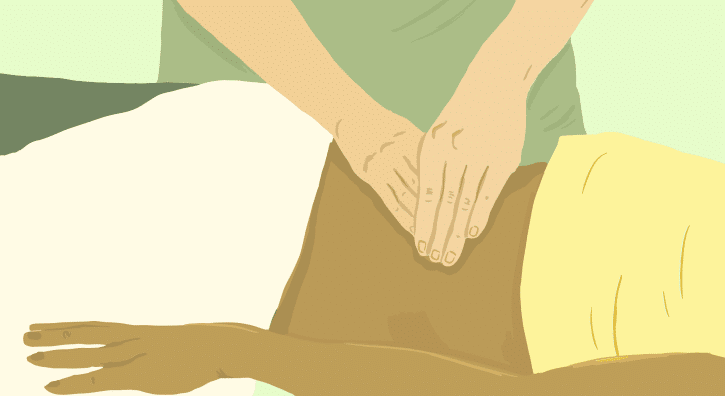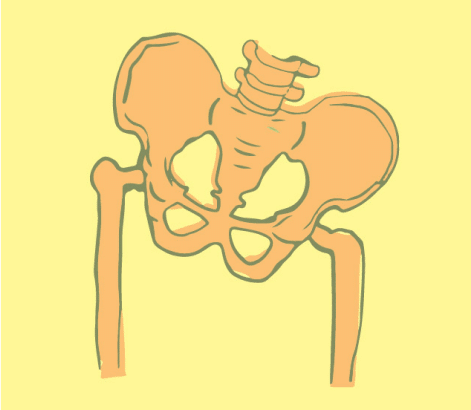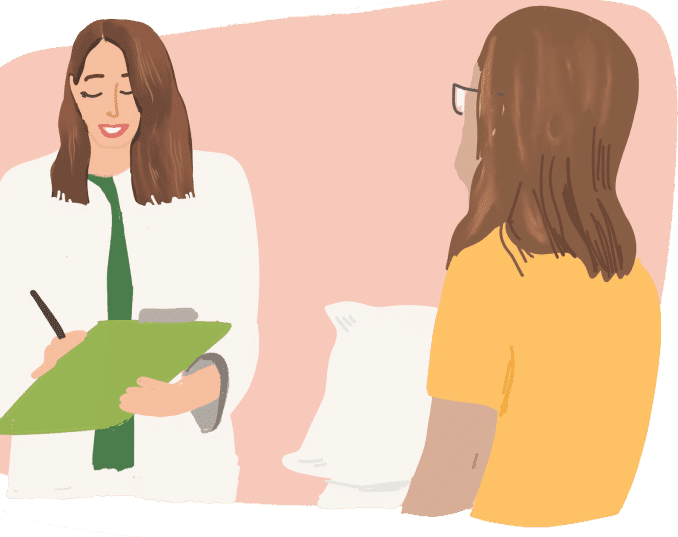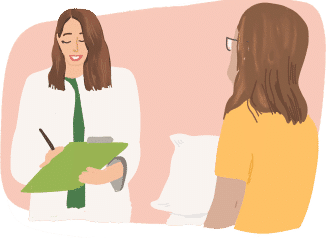

Sexual dysfunction is characterized by ongoing challenges with arousal, orgasm, sexual desire, or pain during intimate encounters. The pelvic floor muscles are intricately connected to these functions. In men, they aid in sustaining erections, while in all genders, these muscles contract rhythmically during climax. Normally, they are not a source of discomfort—in fact, they amplify pleasurable sensations. But when dysfunction in the pelvic floor sets in, the experience of intimacy may be disrupted by pain or an inability to respond normally. Understandably, these symptoms can cause emotional distress. The encouraging news is that with proper intervention—specifically, pelvic floor physical and occupational therapy—many people can find lasting relief and regain sexual function.
The Facts
- One out of every three women who have not yet gone through menopause will face painful sexual activity at some point.
- Between 15 and 72 percent of men under 40 report having symptoms of erectile dysfunction.
- In the 40 to 70 age range, around 52% of men struggle with mild to moderate forms of erectile dysfunction.
- Following prostate surgery, up to 80% of men develop erectile difficulties.
- Roughly 60% of women going through menopause choose not to report painful intercourse to their healthcare provider due to embarrassment.
- Common medications like birth control pills and acne drugs are known to trigger vulvar pain and reduce natural vaginal moisture.
- Even a year and a half postpartum, 65% of women continue to report painful sex.
Sexual dysfunction is characterized by ongoing challenges with arousal, orgasm, sexual desire, or pain during intimate encounters. The pelvic floor muscles are intricately connected to these functions. In men, they aid in sustaining erections, while in all genders, these muscles contract rhythmically during climax. Normally, they are not a source of discomfort—in fact, they amplify pleasurable sensations. But when dysfunction in the pelvic floor sets in, the experience of intimacy may be disrupted by pain or an inability to respond normally. Understandably, these symptoms can cause emotional distress. The encouraging news is that with proper intervention—specifically, pelvic floor physical and occupational therapy—many people can find lasting relief and regain sexual function.
The Facts
- One out of every three women who have not yet gone through menopause will face painful sexual activity at some point.
- Between 15 and 72 percent of men under 40 report having symptoms of erectile dysfunction.
- In the 40 to 70 age range, around 52% of men struggle with mild to moderate forms of erectile dysfunction.
- Following prostate surgery, up to 80% of men develop erectile difficulties.
- Roughly 60% of women going through menopause choose not to report painful intercourse to their healthcare provider due to embarrassment.
- Common medications like birth control pills and acne drugs are known to trigger vulvar pain and reduce natural vaginal moisture.
- Even a year and a half postpartum, 65% of women continue to report painful sex.
Symptoms
*Sexual Dysfunction in people with a penis
- Erectile dysfunction symptoms can include a weak or unreliable erection, failure to maintain an erection, or premature ejaculation.
- There may be little to no force during ejaculation or complete absence of ejaculation.
- Climacturia, or involuntary leakage of urine with orgasm, is sometimes observed.
- Post-ejaculatory discomfort may affect the shaft or head of the penis, the perineum, or the scrotum.
- Discoloration involving the genital or perineal areas—penis, scrotum, or perineum—may also appear.
Postpartum Sexual Dysfunction
- Nursing-related vaginal dryness and reduced lubrication
- Soreness or pain at the perineum due to birth-related trauma
- Loss of ability to climax or decreased orgasm intensity
- Urinary leakage during orgasm or intercourse
- Painful sensations with sex post-delivery
*Sexual Dysfunction in people with vulvas/vaginas
- Inability or diminished capacity to produce vaginal lubrication
- Pain with insertion, with deeper movement, or constant throughout penetration
- Extreme clitoral tenderness or pain from even gentle contact
- Post-intercourse pain or a burning feeling
- Reduced or absent orgasmic ability
- Accidental urine leakage during sexual interactions
- Climacturia, where urine leaks during climax
Menopausal Sexual Dysfunction and Post-gynecologic cancer treatment
- Vaginal dryness due to lowered hormone levels
- Inability or difficulty achieving vaginal penetration
- Pain experienced during or following intercourse
- Weakened or completely absent ability to orgasm
Symptoms
*Sexual Dysfunction in people with a penis
- Erectile dysfunction symptoms can include a weak or unreliable erection, failure to maintain an erection, or premature ejaculation.
- There may be little to no force during ejaculation or complete absence of ejaculation.
- Climacturia, or involuntary leakage of urine with orgasm, is sometimes observed.
- Post-ejaculatory discomfort may affect the shaft or head of the penis, the perineum, or the scrotum.
- Discoloration involving the genital or perineal areas—penis, scrotum, or perineum—may also appear.
*Sexual Dysfunction in people with vulvas/vaginas
- Inability or diminished capacity to produce vaginal lubrication
- Pain with insertion, with deeper movement, or constant throughout penetration
- Extreme clitoral tenderness or pain from even gentle contact
- Post-intercourse pain or a burning feeling
- Reduced or absent orgasmic ability
- Accidental urine leakage during sexual interactions
- Climacturia, where urine leaks during climax
Postpartum Sexual Dysfunction
- Nursing-related vaginal dryness and reduced lubrication
- Soreness or pain at the perineum due to birth-related trauma
- Loss of ability to climax or decreased orgasm intensity
- Urinary leakage during orgasm or intercourse
- Painful sensations with sex post-delivery
Menopausal Sexual Dysfunction and Post-gynecologic cancer treatment
- Vaginal dryness due to lowered hormone levels
- Inability or difficulty achieving vaginal penetration
- Pain experienced during or following intercourse
- Weakened or completely absent ability to orgasm
Associated Diagnoses
Diagnoses such as Endometriosis, Vulvodynia, Interstitial Cystitis/Painful Bladder Syndrome, Pudendal Neuralgia, Chronic Pelvic Pain Syndrome/Male Pelvic Pain, Lichen Sclerosus, Lichen Planus, Pelvic Floor Dysfunction, post-prostatectomy complications, and Genitourinary Syndrome of Menopause are all associated with sexual dysfunction and pelvic pain.

Associated Diagnoses
Diagnoses such as Endometriosis, Vulvodynia, Interstitial Cystitis/Painful Bladder Syndrome, Pudendal Neuralgia, Chronic Pelvic Pain Syndrome/Male Pelvic Pain, Lichen Sclerosus, Lichen Planus, Pelvic Floor Dysfunction, post-prostatectomy complications, and Genitourinary Syndrome of Menopause are all associated with sexual dysfunction and pelvic pain.


Causes of Sexual Dysfunction
- Pelvic pain syndromes associated with pelvic floor dysfunction (above)
- Childbirth
- Medications
- Obesity
- Cardiovascular disease
- Menopause
- Jelqing
- Genital mutilation, genital cutting
- Surgically-induced
- Pelvic Floor Reconstruction
- Prostatectomy
- Gender affirming surgery
- Episiotomy
- Vestibulectomy
- Pudendal Nerve Decompression
- Mesh excision
Causes of Sexual Dysfunction
- Pelvic pain syndromes associated with pelvic floor dysfunction (above)
- Childbirth
- Medications
- Obesity
- Cardiovascular disease
- Menopause
- Jelqing
- Genital mutilation, genital cutting
- Surgically-induced
- Pelvic Floor Reconstruction
- Prostatectomy
- Gender affirming surgery
- Episiotomy
- Vestibulectomy
- Pudendal Nerve Decompression
- Mesh excision

Diagnostic Challenges
According to recent studies, the majority of clinicians still feel uncomfortable initiating conversations about sexual issues, and patients mirror that discomfort by avoiding the topic during their visits. This silence can be particularly damaging for members of the LGBTQ+ population, who are disproportionately affected by discrimination and lack of access to comprehensive sexual healthcare. The medical field must evolve. At PHRC, our goal is to ensure that every person we treat feels safe, acknowledged, and supported in all facets of their pelvic and sexual health journey. Sexual well-being is a legitimate and growing specialty, and resources are available. Because pleasure and function stem from both physical and emotional factors, the best care strategies tend to be holistic and collaborative—often involving physicians, psychologists, and pelvic floor physical and occupational therapists working together to restore function and confidence.
Diagnostic Challenges
According to recent studies, the majority of clinicians still feel uncomfortable initiating conversations about sexual issues, and patients mirror that discomfort by avoiding the topic during their visits. This silence can be particularly damaging for members of the LGBTQ+ population, who are disproportionately affected by discrimination and lack of access to comprehensive sexual healthcare. The medical field must evolve. At PHRC, our goal is to ensure that every person we treat feels safe, acknowledged, and supported in all facets of their pelvic and sexual health journey. Sexual well-being is a legitimate and growing specialty, and resources are available. Because pleasure and function stem from both physical and emotional factors, the best care strategies tend to be holistic and collaborative—often involving physicians, psychologists, and pelvic floor physical and occupational therapists working together to restore function and confidence.
Treatment:
How We Can Help You

Residents of Silverlake experiencing sexual dysfunction may benefit from a detailed pelvic floor physical and occupational therapy evaluation to better understand how their pelvic floor may be involved. At your appointment, your therapist will thoroughly review your symptoms, medical history, prior diagnoses, and any treatments you’ve tried—including what has and hasn’t worked. We understand that patients from Silverlake often arrive feeling frustrated after exhausting multiple care options, which is why we approach every evaluation with empathy and respect. The physical exam portion involves an assessment of your muscles, nerves, joints, soft tissues, and movement patterns. Afterward, your physical and occupational therapist will discuss the findings and provide insight into how your symptoms developed. Based on your needs, they will create a structured plan with short-term objectives and long-term goals to help guide your recovery. Typically, patients attend therapy one to two times per week over a span of roughly 12 weeks, supported by an individualized home exercise program. We’ll also coordinate with your broader care team to ensure a seamless recovery process. Our team is here to support your journey back to wellness—so you can feel your best in Silverlake and beyond.

Treatment:
How We Can Help You
Residents of Silverlake experiencing sexual dysfunction may benefit from a detailed pelvic floor physical and occupational therapy evaluation to better understand how their pelvic floor may be involved. At your appointment, your therapist will thoroughly review your symptoms, medical history, prior diagnoses, and any treatments you’ve tried—including what has and hasn’t worked. We understand that patients from Silverlake often arrive feeling frustrated after exhausting multiple care options, which is why we approach every evaluation with empathy and respect. The physical exam portion involves an assessment of your muscles, nerves, joints, soft tissues, and movement patterns. Afterward, your physical and occupational therapist will discuss the findings and provide insight into how your symptoms developed. Based on your needs, they will create a structured plan with short-term objectives and long-term goals to help guide your recovery. Typically, patients attend therapy one to two times per week over a span of roughly 12 weeks, supported by an individualized home exercise program. We’ll also coordinate with your broader care team to ensure a seamless recovery process. Our team is here to support your journey back to wellness—so you can feel your best in Silverlake and beyond.
How Can We Help You?
Please use the form below to send us any questions or comments. You must include your e-mail address in order for us to send a response. Please be assured that all of your information will be kept confidential.

Join The Newsletter. Win a copy of our book, “Pelvic Pain Explained!”
We love getting to know our website visitors. Please tell us a little bit about yourself and get the latest info via PHRC e-newsletter!
*Subscribers automatically eligible to win our book, “Pelvic Pain Explained.”
At its essence, Pelvic Pain Explained tells the story of how pelvic pain arises in patients’ lives, the diagnostic and therapeutic hurdles they and their providers must confront, the complexity of filtering through numerous and often conflicting treatment options, and the emotional, physical, and social burden of managing a condition that isn’t visible to others—but affects every part of life.


